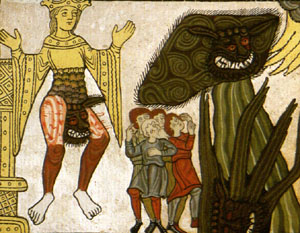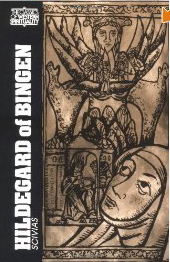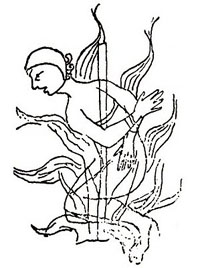|
HOME
CATHAR
BELIEFS
Basic
Tenets
Implications
Cathar
Believers
Cathar
Elect
Afterlife,
Heaven
& Hell
Other
Beliefs
Cathar
Ceremonies
Cathar
Prayer
The
Cathar Hierarchy
CATHAR
WARS
Albigensian Crusade
Who
led the Crusade ?
Crusader
Coats of Arms
Defender
Coats of arms
Medieval
Warfare
CATHOLIC
CHURCH
Cistercians
Dominicans
Franciscans
Cathars
on Catholics
Catholics
on Cathars
Catholic
Propaganda
"Kill
Them All ... "
Waldensians
Troubadours
CATHAR
INQUISITION
Inquisition
Inquisition
documents
CATHAR
CASTLES
Cathar
Castles
Cathar
Castle Photos
CATHAR
ORIGINS
Early
Gnostic Dualism
Manichaeans
CATHAR
LEGACY
Geopolitics
Historical
Studies
Popular
Culture
Catholic
Inheritance
Protestant
Inheritance
Cathar
Vindications
Do
Cathars still exist ?
CATHAR
TOURS
WHO's
WHO
The
Catholic Side
The
"Cathar" Side
Counts
of Toulouse
The
Cross of Toulouse
CATHAR
TIMELINE
Detailed
Chronology
MORE
INFORMATION
CATHAR
TERMINOLOGY
A
Cathar Glossary
|
Hildegard of Bingen
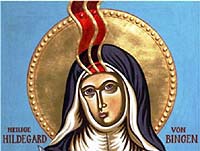  Hildegard
of Bingen (1098 – 17 September 1179), also known as Saint Hildegard,
and Sibyl of the Rhine, was a writer, composer, philosopher, Christian
mystic, German Benedictine abbess and visionary. Elected a magistra
by her fellow nuns in 1136, she founded the monasteries of Rupertsberg
in 1150 and Eibingen in 1165. One of her works as a composer, the
Ordo Virtutum, is an early example of liturgical drama. She
wrote theological, botanical and medicinal texts, as well as letters,
liturgical songs, poems, and the first surviving morality play.
She was a severe critic of contemporary Church practices. Hildegard
of Bingen (1098 – 17 September 1179), also known as Saint Hildegard,
and Sibyl of the Rhine, was a writer, composer, philosopher, Christian
mystic, German Benedictine abbess and visionary. Elected a magistra
by her fellow nuns in 1136, she founded the monasteries of Rupertsberg
in 1150 and Eibingen in 1165. One of her works as a composer, the
Ordo Virtutum, is an early example of liturgical drama. She
wrote theological, botanical and medicinal texts, as well as letters,
liturgical songs, poems, and the first surviving morality play.
She was a severe critic of contemporary Church practices.
Hildegard's visions were recorded in such detail that it is now
widely accepted that they were caused by severe migraines - they
provide a textbook example. Elements of her "visions"
were regarded as suspiciously partisan even in her own day, and
factual elements subsequently proved to be false, which also suggests
a physiological source for them. She imagined that that the appearance
of the Cathars signalled the release of Satan from Hell.
A strangely distorted version of what she thought, and what the
Cathars thought, was given by Pope Benedict XVI in 2010. It is difficult
to believe that he is really referring here to the Cathars, even
German Cathars, since what he says is so badly misinformed. One
possibility is that he is not referring to Cathars at all but to
another contemporary German group given the same name, who were
calling for the reform of the Catholic Church from within the Church,
rather like the contemporary Vaudois or Waldensians.
|
... With the spiritual authority with which she was endowed,
in the last years of her life Hildegard set out on journeys,
despite her advanced age and the uncomfortable conditions
of travel, in order to speak to the people of God. They all
listened willingly, even when she spoke severely: they considered
her a messenger sent by God. She called above all the monastic
communities and the clergy to a life in conformity with their
vocation. In a special way Hildegard countered the movement
of German cátari (Cathars). The cátari, meaning
literally “pure”, advocated a radical reform of
the Church, especially to combat the abuses of the clergy.
She harshly reprimanded them for seeking to subvert the very
nature of the Church, reminding them that a true renewal of
the ecclesial community is obtained with a sincere spirit
of repentance and a demanding process of conversion, rather
than with a change of structures. This is a message that we
should never forget. Let us always invoke the Holy Spirit,
so that he may inspire in the Church holy and courageous women,
like St Hildegard of Bingen, who, developing the gifts they
have received from God, make their own special and valuable
contribution to the spiritual development of our communities
and of the Church in our time.
Extract from BENEDICT XVI, General Audience
given in the Paul VI Hall in Rome, Wednesday, 8 September
2010.
|
|
His Holiness omits to mention anywhere in
his audience that Hildegard's "visions" are now
generally acknowledged to have been caused by severe migraines.
Both His Holiness and Hildegard seem to be under the impression
that the Cathars wanted to reform the Catholic Church. In
fact they saw their own Church as the one true Church, and
considered the Catholic Church to be the Church of Satan.
They would not have thought of reforming it, and there is
no documentary evidence that they did so think.
|
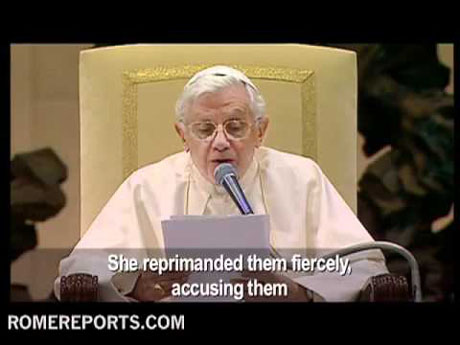 |
| |
| |
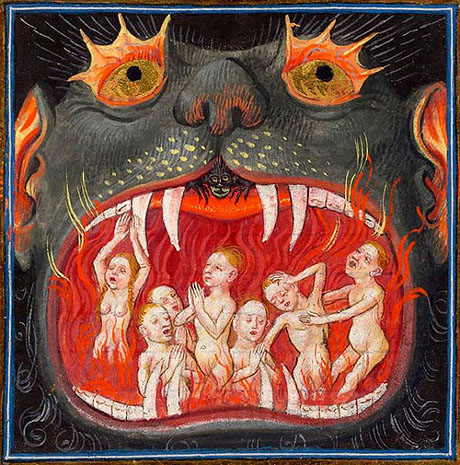 |
| |
|
|










